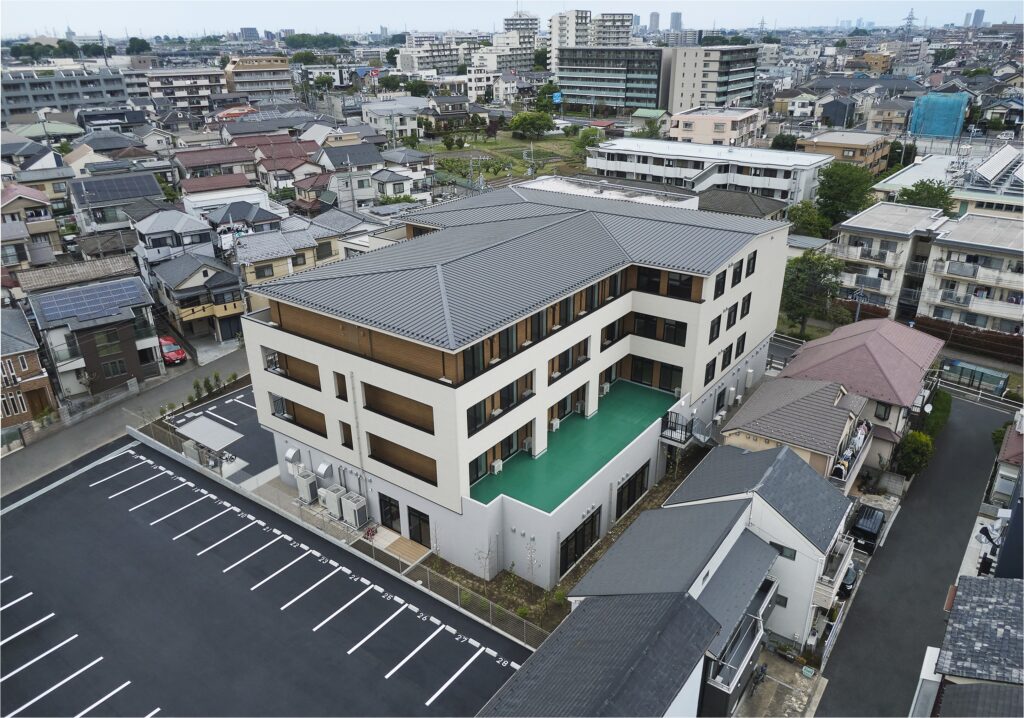Sumitomo Forestry’s Latest Achievement: Mid-Rise Wooden Senior-Care Facility Blends Sustainability and Design Excellence
I am delighted to share an update on Sumitomo Forestry‘s recent developments, marking their expansion both in size and stature. Exactly one year ago, the company accomplished a significant Japanese-styled elderly care project in Itami City, Hyogo Prefecture, which we previously highlighted in the blog article titled “East meets West”. Fast-forwarding to the present, COFI staff from Canada Wood Japan’s office once again had the privilege of a private tour. This time, they explored a newly completed mid-rise, four-story senior-care facility in Nishi-Tokyo this June.


Their latest project, Nursing Home Pleasant Maison West Tokyo, showcases a two-by-four construction method. The first floor boasts an RC podium, housing the dining room and spacious areas. On the second and upper floors, 77 resident rooms (each spanning 18m2) were constructed using this efficient wood-based method, resulting in a total floor area of 2,977m2. The project utilized a range of engineered and solid structural wood products, including SPF (368m3) and OSB (31m3), all sourced from Canadian suppliers. Care Twentyone Corporation owns and operates the nursing home, while Sumitomo Forestry took charge of the design and construction. Additionally, Matsumoto Sekkei contributed to the engineering and structural calculations for the building.
Architecturally, the building emphasizes the second and third floors, blending seamlessly with the residential surroundings and avoiding an overly conspicuous appearance. This approach is particularly relevant in urban settings, where senior-care facilities, including nursing care units, are commonly erected in residential zones governed by a floor-area ratio of 200% or less. The decision to construct this four-story facility aligns with maximizing the building’s floor-area ratio, in accordance with the profitability perspective and land utilization criteria in this urban context.
Moreover, it’s worth noting that the Sumitomo Forestry Group is committed to promoting medium- and large-scale wooden buildings in Japan and internationally, as part of their “Mission TREEING 2030” long-term vision extending to 2030. Pursuant to this goal, the project’s environmental impact was assessed. Using the company’s “One Click LCA 3” software and data from the construction materials, the embodied carbon and carbon sequestration were calculated. For the 503.3m3 of wood utilized in the structural frame, the building’s embodied carbon emissions were determined to be 1,559.65 tons CO2, with a corresponding carbon sequestration of 470.59 tons CO2. Moving forward, the company plans to employ this software to assess each property’s carbon footprint, aiming to curtail embodied carbon emissions. We at Canada Wood fully endorse this initiative and its sustainable objectives.


